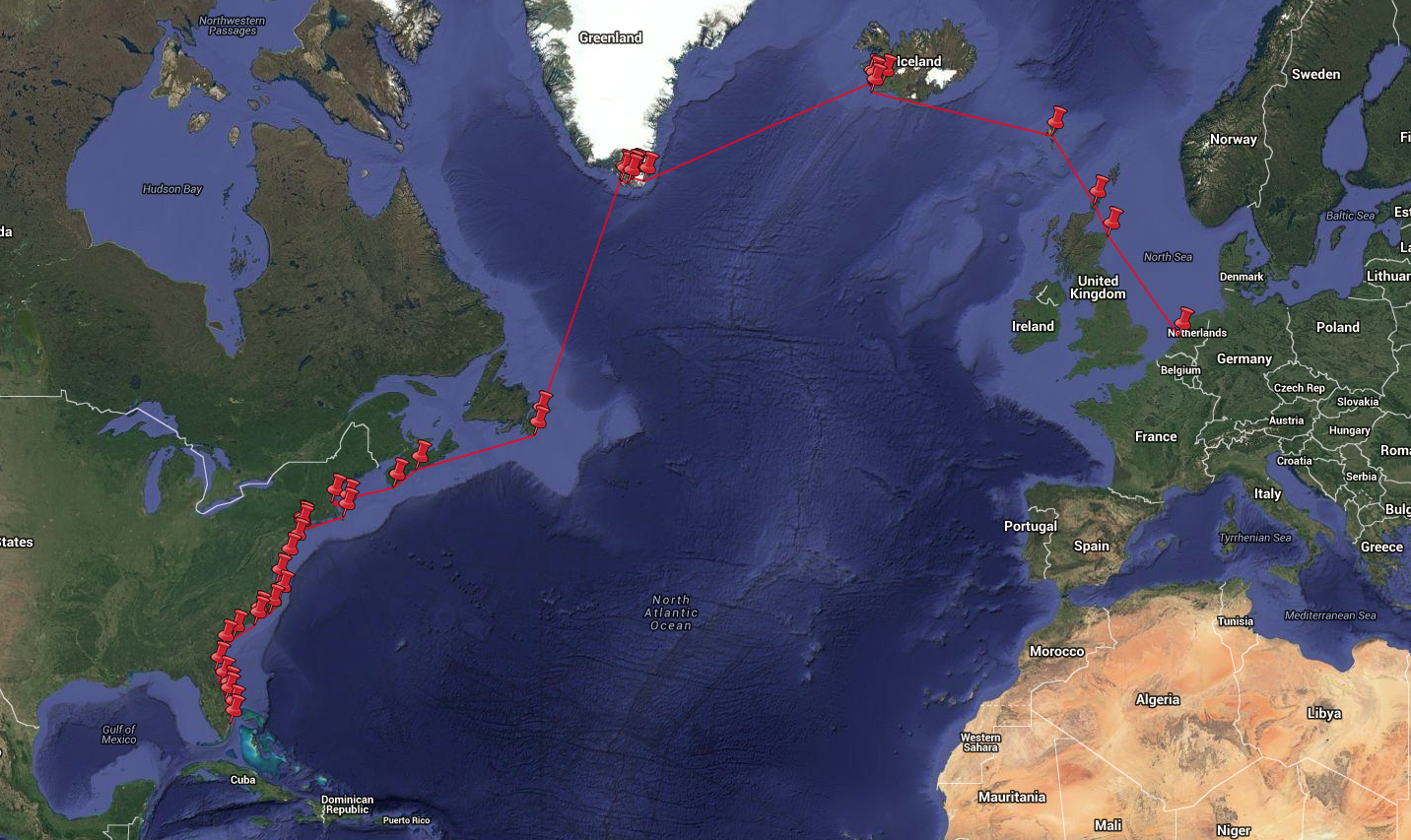North Baltic sea
Guru
Chasing forecasts is predicated on a cruising speed of 6 to 7 knots, 130 to 150 nm/24hr.
I don't know anyone crossing the Atlantic at 15 knots. A sailboat can probably do 12 to 15 in the trade winds.
A Low moves 500 nm/ day. So even if, and that's a big if, the forecast is "right" it can be easily off 150 miles, at which point you zigged when you should have zagged.
I would love to have been able to find that Azores High, but I also can't go 500 miles out of my way to find it.
Hi,
Not trawler, but power boat
Sir Richard Branson and hes team cross Atlantic 1986 3 day, 8 hours and 31minutes, i dont now what is avager speed, but i think +15 knots. Boat is 72 feet "Virgin Atlantic Challenger II"
Video this atlantic cross regords
And articel this boat
Boat that made Branson a household name to be sold for £725,000
An old Viking route is one option, making shorter steps and refuiling fuel

No limits about 50 feet run this route 2016 EU to US boat shows, nice video this trip
Last edited:

